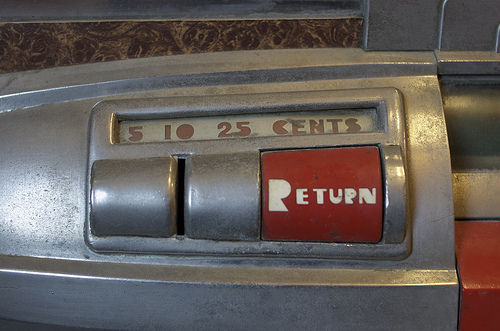You go to the grocery store and think “Ok, if I buy lunch meat and bread I’ll save on lunch this week, instead of going out”. But to really understand if that’s true, or to quantify exactly how much you’re saving, it’s best to break the purchase down into a per-use cost.
The per-use cost is an interesting way of thinking about things, because it makes you appreciate the value a little more. Here’s an example:
Dental Floss costs $1.89 for 55 yards. Assuming you use a foot of dental floss each night (you are flossing every night right?), that’s 165 nights (55 yards ~ 165 ft) of flossing at a cost of basically 1.1 cent per flossing. It’s funny to think of things in terms like that, you can almost imagine dropping a penny into a machine and getting a length of floss.
So to our lunch meat example. Say a loaf of bread is $4.99, and a pound of lunch meat is $5.99. Our total cost is $10.98. If you assume you get four sandwiches out of this purchase, that’s a cost of $2.75 per sandwich. That means if Subway is having $3 subs, you are not necessarily very far ahead.
Another example is a car. Some people buy new cars every two years. Assuming a new car is $20,000, and will lose half of it’s value in two years, that equals a cost of $13.70 per day (not counting gas, insurance, parking, tolls, registration, etc…). If that person were to buy a comprable used car, say for $10,000, which would then be worth $7,000 2 years later, it’s only a cost of $4.10 per day. It’s more clear this way that a car that costs twice as much actually costs 3 times as much.
I love looking at costs like this. Why? Does it make you cringe to have to pay $.50 into a meter for parking? Transactional costs make us really think about the value. Next time you purchase something, think about it as if you had to insert the money for each use.
You’ll find some things you considered expensive are actually cheap – a $1.99 app for your iPhone that you use every day for 3 years is $.001 per use, and some things you think are cheap, $2.99 pint of ice cream at $2.99 per use, are actually expensive on a per-use comparison basis.
Photo by Tim Pierce via Flickr

